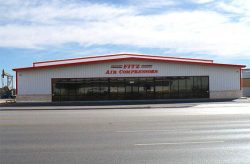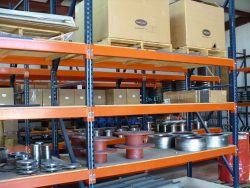How To Remove Moisture from Compressed Air Systems
Compressed air systems require dry air or at least less than 50% humid air. If you notice water in air compressor systems, it could be a sign of damage or a malfunctioning part within your air compressor.
If this is the case, it’s best to perform air compressor water removal as soon as possible. Air compressor maintenance and repair experts can provide services that will help troubleshoot and address your system’s issues. Here are some techniques to remove moisture from air compressor systems that you could perform on your own.
For professional assistance or to schedule a repair, visit our Contact Us page or call us at 1.888.220.3489.
Tips on How To Remove Moisture from Air Compressor
If you start to see signs of excessive moisture coming from your industrial air compressor, it could lead to long-term damage that could affect the efficiency and performance of your equipment. These are some of the most effective ways to address moisture.
1. Installing Air Dryers
Some air compressor systems require air dryers for effective air compressor water removal. Depending on your use of air compressors, some moisture in the air is inevitable. Air dryers work with air compressors to reduce moisture and humidity and prevent damage to your equipment, such as corrosion.
Not all air compressor systems require a dryer to function. If the air compressor system’s manufacturer or distributor specifically states the unit needs dry air, then a dryer is necessary. Additionally, these are the signs you should watch out for that show your operations may need one:
- The pipelines in and out of your compressor show signs of rust and corrosion.
- Water is coming out of your hoses and lines.
- Your operational floor is prone to humid spaces, water spots, and signs of excess moisture.
- Your equipment is releasing water vapor.
Depending on your equipment and application, you can opt for a refrigerated or desiccant air dryer. The refrigerated air dryer cools the air, which allows it to condense, trap, and drain excess moisture through the water vapors. The desiccant air dryer uses substances that chemically bond with water, creating dry air that is colder and drier than air from the refrigerated air dryer.
2. Drain the Air Compressor Tank
Water in air compressor systems often falls to the tank drain. There’s usually a drain beneath the air compressor pressure tank where water and oil can collect. It’s recommended that you open and empty out this area after every time you use your air compressor. Otherwise, it can lead to corrosion and rust build-up.
However, regular draining could be impractical if you find it difficult to reach the drain valve after every use. One solution is installing a drain extension kit, which could either automate or make it easier to drain fluids from your unit manually. Another option is to include drainage more regularly in your air compressor maintenance checklist.
3. Invest in Filters
Also known as absorption drying, this involves materials that can absorb moisture from the air. If an air dryer isn’t a practical option on how to remove moisture from air compressor systems, you could instead install a filter to mechanically separate water from the air. However, not all filters may be applicable depending on your air compressor unit.
- Centrifugal Water Separator Filter: This filter removes around 40 to 60% of the water from the air. It uses centrifugal force to remove and separate as much moisture from the air as possible.
- Heat Exchanger or Aftercooler: These filters cool your air to condense water vapors. These vapors can be manually removed by capturing or separating them from the cold air.
4. Use Pipe Air Drying
This method uses several long upward and downward pipes to dry air through heat and gravity. Your pipes absorb the heat, allowing the air to cool as it passes through. During this process, gravity allows water to drop to the bottom of the lines, which are later drained through a water trap or a manual valve. Most moisture within the first few pipes should condense and fall within each segment. The air should be mostly dry by the last few lines, and no more water should fall into the pipes.
This solution could be a cost-effective one that doesn’t require additional equipment. However, you must install several pipe segments to ensure the air is dehydrated by the last set of pipes. Horizontal pipes must also be angled to ensure water drops rather than settling in the line and causing rust or water damage.
5. Storage Tank Cooling
Most industrial air compressors come with a storage tank for air reserves before it exits the compressor. To ensure dry air, your storage tank may have either wet or dry storage to ensure the air being released is dry.
Wet storage tanks hold compressed air that hasn’t gone through air drying. These tanks cause moisture to condense, which significantly reduces the moisture content in the air. Once the compressor is operational, there is very minimal moisture left that passes through the air dryer.
On the other hand, dry storage tanks hold compressed air that has already gone through the drying process. The tank protects the air from additional moisture by maintaining its temperature and preventing condensation from developing from the internal and external temperatures.
6. Adsorption Drying
Unlike absorption drying through filters, adsorption uses materials or substances that capture moisture by adhering to it. The process dries the moisture content from the air by acting as an adhesive that catches the water when air passes through. These materials can include:
- Silica gels
- Molecular sieves
- Activated alumina
Why Does My Air Compressor Have So Much Moisture?
Like any other type of equipment in your worksite, air compressors will experience regular wear and tear. However, certain environmental factors can increase the presence of moisture in the air, speeding up wearing out the main parts of your unit. Some of these factors include:
- Air Conditioning: Cold air is denser and is likely to have some moisture. Colder operating spaces could affect the amount of water in the air because of condensation, which your compressor can absorb.
- Running Water Sources: Having running water in your industrial workspace could affect temperature and humidity. There’s also the risk of water vapor, water damage, and rust that can spread.
- Water Damage and Leaks: Water damage on the walls, windows, and roofs can affect your space’s humidity and moisture. This can also affect the air quality and the type of air that your compressor absorbs.
- Humidifiers and Other Equipment: Humidifiers and other equipment in the area that adds steam, vapors, and moisture to the air could increase the amount of water in the air.
- Poor Ventilation: Proper ventilation and good airflow reduce the condensation and moisture that pools in one room. If your air compressor is situated in a room with poor ventilation, the humidity may spread inside the unit.
How Does Moisture Affect My Air Compressor?
Most air compressors often have features that deal with regular air moisture. However, excessive moisture in the air or everyday wear and tear can lead to moisture build-up that can take a toll on your unit’s integrity or performance. Left unchecked, the following issues could affect your air compressor:
- Clogged Pipes and Air Lines: Moisture could affect your unit’s inbound and outbound air. This could lead to malfunctions or issues with its performance, which could affect your operations in general.
- Rust and Corrosion: Water left stagnant in your air compressor can lead to rust and corroded metal. This could also contaminate the compressed air, which could be a code violation for specific industries.
- Overworked Unit: The extra pressure from the moisture could strain your unit’s parts and cause it to overwork to achieve its standard performance. This could wear down the parts of your unit much faster, which will either need more maintenance or destroy your compressor.
- Affected Application: The excess moisture could stay in the compressed air, which could affect the final product or the application of your air compressor. For instance, using compressed air on porous materials like wood can lead to material warping, while metallic materials can lead to early rust formation.
Over time, your air compressor’s parts will experience regular wear and tear. Performing the necessary maintenance checks can help you detect early signs of irregularities and maximize the use of your unit.
Air Compressors, Repairs, and Industrial Equipment Solutions from Fitz Equipment
Knowing how to remove moisture from air compressor systems provides you with various solutions that could help your operations. Many manufacturers and industrial operations require a robust and reliable air compressor system. At Fitz Equipment, we provide the products and services you need to maintain your equipments’ integrity and performance.
Our team is your source for equipment, replacement parts, regular services, and emergency 24-hour services. We understand the demand for equipment and the value of time and reliability that make tools like compressed air systems assets to your operations. Fitz Equipment has built a brand known for dependability and attentive customer service that our clients have come to appreciate from us.
For quotations, queries, and additional information about our products and services, contact Fitz Equipment today.




